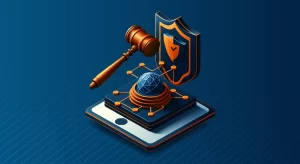
Just-in-Time Access Control

Introduction
In today’s data-driven world, organizations are collecting and storing more sensitive information than ever before. While this data fuels business insights and competitive advantage, it also creates significant security risks. Data breaches continue to make headlines, with the average cost now exceeding $4 million per incident. To mitigate these risks, many companies are turning to just-in-time (JIT) access control.
What is Just-in-Time Access Control?
Just-in-time access control is a security method that gives users temporary access to data resources. We grant this access based on a specific business need. JIT access controls provide access for a limited time and revoke it when no longer needed.
This is different from traditional access controls, which grant ongoing access. By minimizing standing access, JIT significantly reduces the attack surface.
JIT access control systems make real-time authorization decisions using contextual factors like:
- The user’s identity and role
- The data or resource being requested
- The time and location of the access attempt
- The stated business justification
When a user requests access, the system evaluates these factors against predefined policy rules. If the request approves, the JIT system creates temporary credentials for a limited time or usage. The system logs all access requests and authorizations for auditing purposes.
Benefits of Just-in-Time Access Control Implementing
JIT access control provides several key security benefits:
Enforces least privilege: Users only gain the minimum data access needed for specific tasks. This limits exposure from excessive permissions.
Reduces standing access: Ephemeral permissions reduce the risk of misusing compromised credentials over long periods.
Increases visibility: Logging all access requests and authorizations provides detailed visibility into data usage patterns. This helps detect anomalies.
Strengthens compliance: Granting access only with justification and auditing aligns with regulations like HIPAA, PCI-DSS, and GDPR.
Integrating Just-in-Time Access
To use JIT access control, organizations must combine it with their current identity management and data systems. Common data sources covered by JIT include databases, data warehouses, file shares, and cloud storage.
Many databases support JIT access via dynamic views. For example, PostgreSQL allows creating views that filter tables based on the current user. When a user queries the view, they can only see data for which they currently have authorization. The JIT process can grant views ephemerally.
Example PostgreSQL JIT View:
CREATE VIEW jit_customer_view AS SELECT * FROM customers WHERE account_manager = current_user; GRANT SELECT ON jit_customer_view TO alice;
The current user, who is the account manager, creates a view called jit_customer_view to show customer rows. This view will only show information related to customers. The account manager must be the current user to access this view. The GRANT statement gives the user “alice” temporary query permissions on the view.
Other ways to control access exist. One way is by giving out temporary database credentials. Another way is by providing access tokens for cloud APIs.
You can also create dynamic firewall rules for certain resources. The optimal approach depends on each organization’s systems and security requirements.
Challenges and Best Practices
While JIT access control provides clear security benefits, it also comes with implementation challenges. Users may experience delays in accessing data as they navigate the approval process.
Handling time-sensitive requests requires well-designed authorization workflows.
Organizations must also adjust their security policy and access review cadence for ephemeral permissions. Some best practices include:
- Require detailed business justifications for sensitive data access
- Automatically expire permissions based on timeframes or usage
- Implement user behavior analytics to detect access anomalies
- Regularly audit JIT logs to verify appropriate access
- Provide user training on JIT processes and expectations
By proactively addressing these challenges, companies can reap the benefits of JIT access control while minimizing business friction.
Conclusion
Using just-in-time access control can help organizations lower security risks caused by too much data access. By dynamically provisioning and revoking permissions with granular policy rules, JIT significantly reduces the attack surface.
Integrating JIT with databases and cloud resources does require carefully designing authorization workflows and policy.
However, with the proper governance, the enhanced security and compliance benefits make JIT access control well worth the effort.
DataSunrise provides a comprehensive set of tools for simplifying JIT access control in your data estate. This suite includes features for security, audit, masking, and compliance. Their flexible platform integrates with databases, data warehouses, and cloud services to automate JIT workflows. To learn more, visit the DataSunrise team for an online demo.
